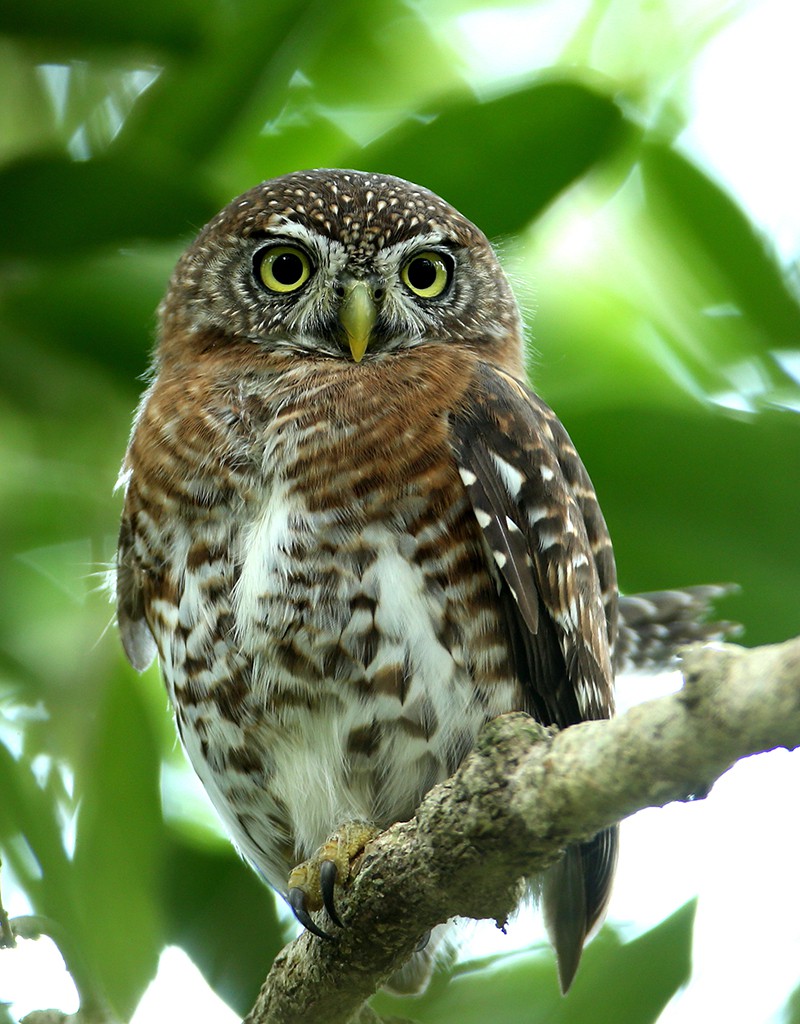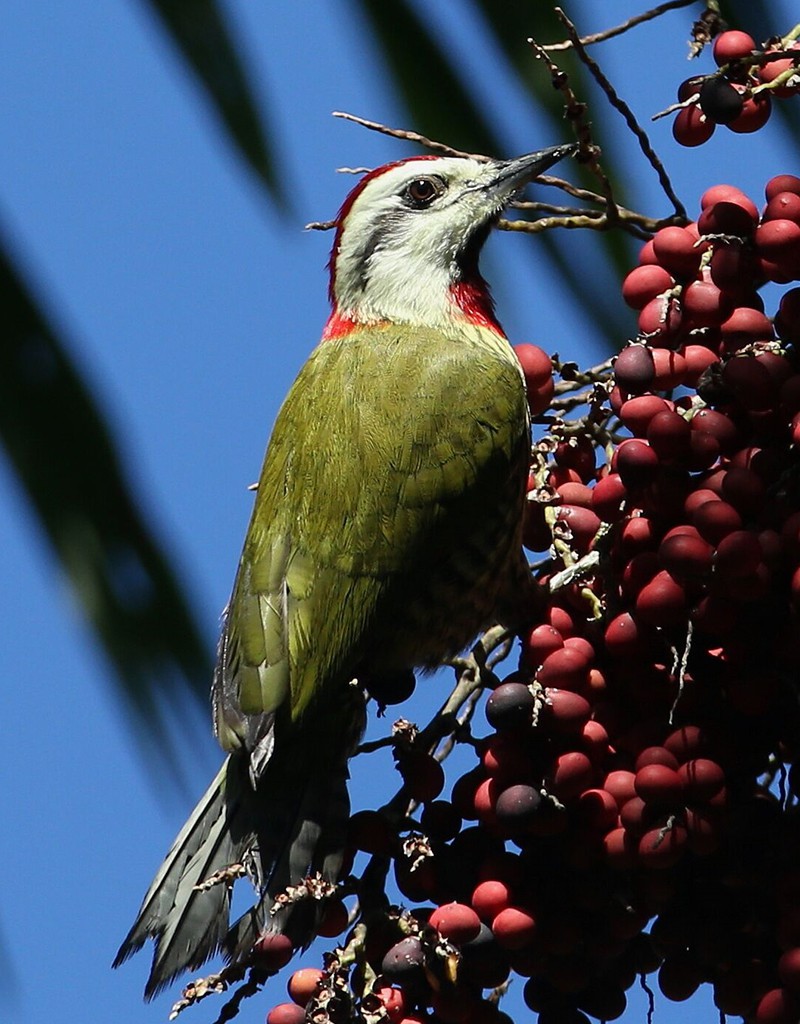BirdWatching’s Winter Cuba Bird Survey
December 10-19, 2016: An exclusive U.S.-led, U.S.-managed birding program in Cuba’s Western Mountains, Zapata Peninsula, Northern Archipelago, Escambray Valley, and Havana presented by BirdWatching magazine in partnership with the Caribbean Conservation Trust.
December 19-20, 2016: Optional Havana extension
For the second time, BirdWatching magazine, in collaboration with the Caribbean Conservation Trust (CCT), is promoting an exclusive, U.S.-led and U.S.-managed birding program to Cuba, the Caribbean’s largest and most ecologically diverse island nation. (Our first trip was a huge success. Read the trip list.)
The program is coordinated under U.S. government authorization by Connecticut-based CCT. In early 2016, CCT staff began their 20th year of managing bird-conservation and natural-history programs in Cuba. Along with BirdWatching Editor Chuck Hagner, our team will include acclaimed Cuban scientist Dr. Luis Diaz, curator of the National Museum of Natural History in Havana, a bilingual Cuban tour leader, and local naturalists in three different birding regions.
The Caribbean Conservation Trust designed this itinerary to take you to Cuba’s finest bird habitats, most beautiful national parks, diverse biosphere reserves, and unique natural areas. We will interact with local scientists and naturalists who work in research and conservation. In addition to birding, we will learn about the ecology and history of the regions we visit. Finally, and especially given the ongoing changes in U.S.-Cuba relations, we can expect some degree of inquiry into fascinating aspects of Cuban culture, history, and daily living during our visit.



Where We Travel
Our Cuba Bird Survey begins in the forests surrounding Las Terrazas Community, established in 1968 as a re-forestation and community-integrated development project. In Cuba’s post-revolutionary history, the community has blossomed as a model of sustainability and is currently a prime destination for ecologically based tourism.
Western mountains
A highlight of the trip will be a visit to the magical, unusually beautiful karstic landscape of mogotes — the towering, lushly vegetated, flat-top limestone monoliths that dominate the Organos Mountains.
This is the only region in which we will likely see Cuban Solitaire, Cuban Grassquit, Giant Kingbird, and Olive-capped Warbler. Other potential endemic species for western Cuba include Cuban Oriole, Cuban Green Woodpecker, Cuban Pewee, Cuban Pygmy-Owl, Cuban Tody, Cuban Trogon, Cuban Vireo, and Yellow–headed Warbler.
Zapata Peninsula - Bay of Pigs
The Zapata Peninsula covers more than 2,800 square miles and features easily accessible, Everglades-like ecology and habitat. Framed by the pristine Caribbean coastal environment of the Bay of Pigs, the peninsula features vast open swampland, low coastal forests, sparkling white sand beaches, healthy and accessible coral reefs, and refreshing natural limestone pools called cenotes. Bee Hummingbird, Cuban Black Hawk, Zapata Wren, Zapata Sparrow, Fernandina’s Flicker, Bare-legged Owl, Blue-headedand Grey-fronted Quail-Doves, and Tawny-shouldered and Red-shouldered Blackbirds are among the many birds we will hope to find (three nights).
Cayo Coco and Cuba’s Atlantic Archipelago
Havana

Trip Itinerary
Miami to Havana to Hotel Moka
Departure times are unknown at this time. Upon arrival in Cuba, we will meet our Cuban guide, driver, and biologist and later depart to the tranquil Hotel Moka in the foothills surrounding Las Terrazasecological community, one hour west. Cuban Blackbird, Tawny-shouldered Blackbird, Cuban Emerald, Loggerhead Kingbird, Cuban Trogon, Red-legged Honeycreeper, and Cuban Pewee may be present here. Accommodation and dinner at Hotel Moka.
Day 2: December 11, 2016
Las Terrazas to La Güira National Park
Early breakfast and departure to the national park (45 minutes, with easy forest trails, 2+ miles) and a visit to Cueva de los Portales, a classic “through cave” carved by the San Diego River. This was Che Guevara’s military headquarters during the missile crisis of 1962. Lunch nearby in San Diego de los Banos. Late-day birding near Hacienda Cortina, a lavish former estate with excellent birding options. The endemic Cuban Solitaire, Cuban Vireo, Cuban Oriole, Yellow-headed Warbler, Giant Kingbird, and Red-legged Honeycreeper will be pursued here. Accommodation and dinner at Hotel Moka.
Day 3: December 12, 2016
Las Terrazas to Zapata Peninsula
Morning birding nearby within Las Terrazas and the Sierra del Rosario Biosphere Reserve. Cuban Grassquit, Olive-capped Warbler, Cuban Tody, Cuban Bullfinch, and Great Lizard-Cuckoo are likely species. Lunch at Cafetal Buenavista, a restored 19th-century coffee plantation, offering sweeping views of the mountains, plains, and coast. Departure east to the Zapata Peninsula (4+ hours). Birding stops along the way as opportunity permits. Accommodation and dinner in private home stays in Playa Larga(three nights) on the picturesque Bay of Pigs. This region contains the largest wetland complex in the West Indies and is Cuba’s most prolific birding region. Here we have access to excellent local guides, as well as to protected areas and birding locations off the beaten track.
Day 4: December 13, 2016
Zapata Peninsula
Early breakfast and a morning of birding in a nature preserve adjacent to the small village of Bermejas. Here is our best opportunity to see the endemic Bee Hummingbird (the world’s smallest bird), Fernandina’s Flicker, Bare-legged Owl, Cuban Parakeet, Cuban Parrot,Blue-headed and Gray-fronted Quail-Doves,Key West and Ruddy Quail-Doves. Lunch at Caleta Buena, a beautiful limestone-rimmed inlet abundant with fish and excellent snorkeling opportunities. The historic Bay of Pigs Museum is nearby. Afternoon birding in Bermejas. Dinner and accommodation in Playa Larga.
Day 5: December 14, 2016
Zapata Peninsula
Early breakfast and departure for birding within Zapata National Park and a morning walk along a dry roadway in the swamp at La Turba. This is our best opportunity for Zapata Wren, Zapata Sparrow, Red-shouldered and Tawny-shouldered Blackbirds, and a variety of warblers and other migrants. Lunch and a trip to Las Salinas Wildlife Refuge, with numerous shorebirds, Reddish Egrets, Wood Storks, spoonbills, flamingos, and endemic Cuban Black Hawk. All walking is on dry, flat terrain (less than two miles total). Dinner at a private restaurant in the village, accommodation in Playa Larga.
Day 6: December 15, 2016
Zapata to Cayo Coco
Breakfast, checkout, and birding options within the protected areas of the park, based on leader discretion. Late-morning drive northeast to Cayo Coco (6+ hours), in Cuba’s northern archipelago, the setting for Ernest Hemingway’s novel Islands in the Stream. The keys offer excellent birding, scenery, and accommodation. All-inclusive beachfront accommodation and meals at Sol Cayo Coco Hotel. Birding on site or en route (or both), depending on timing of arrival.
Day 7: December 16, 2016
Cayo Coco
Morning birding on Cayo Paredon Grande, the northeastern-most key in the Cayo Coco archipelago, which is one of Cuba’s most important migratory landfalls. Cuban Gnatcatcher, Oriente Warbler, Scaly-naped Pigeon, Thick-billed Vireo, a possible subspecies of Zapata Sparrow, and Bahama Mockingbird are target birds for the day. Lunch at the hotel followed by afternoon birding on Cayo Guillermo in mixed habitat, including coastal forest, mangrove flats, low coastal scrub, and pristine white sand shoreline (roadside, flat walking). Dinner and accommodation in Cayo Coco.
Day 8: December 17, 2016
Cayo Coco to Sancti Spiritus
Morning birding not far from our hotel for any species we may have missed. Late checkout followed by lunch in Cayo Coco and drive to Sancti Spiritus (3+ hours). Dinner and accommodation at Rancho Hatuey in the peaceful countryside.
Day 9: December 18, 2016
Sancti Spiritus Province-Havana
Breakfast and morning departure west, with birding stops through the province with a chance of spottingPalm Crow, a future endemic with isolated area populations. Afternoon break with lunch en route as we move west toward Havana (5+ hours). Accommodation and dinner in Havana.
Day 10: December 19, 2016
Optional one-day/night extension
Havana-Miami
After breakfast, we will visit the home and private ornithological collection of Orlando Garrido, Cuba’s greatest living naturalist. Sr. Garrido is the venerable retired curator of birds at the National Museum of Natural History in Havana and senior author of Field Guide to the Birds of Cuba (Comstock Books) as well as hundreds of scientific publications. This visit is always mentioned as a trip highlight and is followed by a guided, interpretive exploration of some of colonial Havana’s most significant historical sites. Havana is a UNESCO World Heritage site loaded with museums, a thriving arts scene, and architectural examples of both renovated and neglected structures, many opulent or otherwise unique, representing five centuries of human habitation. The extension also includes lunch in one of Old Havana’s best paladares (private restaurant). Late afternoon is open for self-exploration of this fascinating and historic small city. Accommodation in Havana. Dinner at a private waterfront restaurant.
Those not choosing the extension will be provided airport transfer and depart Havana for the U.S. on December 19.
Day 11: December 20, 2016
Havana-Miami
Breakfast and transfer to José Martí International Airport for your return flight to Florida.
at cubirds@aol.com or (203) 733-1162.
Read Birdwatching’s June 2015 cover story about birding in Cuba.
Read Birdwatching’s June 2016 article about upcoming trip to Cuba in December 2016
See a list of species recorded during our February 2016 bird survey.
Read what fellow birders have said about the Caribbean Conservation Trust.
